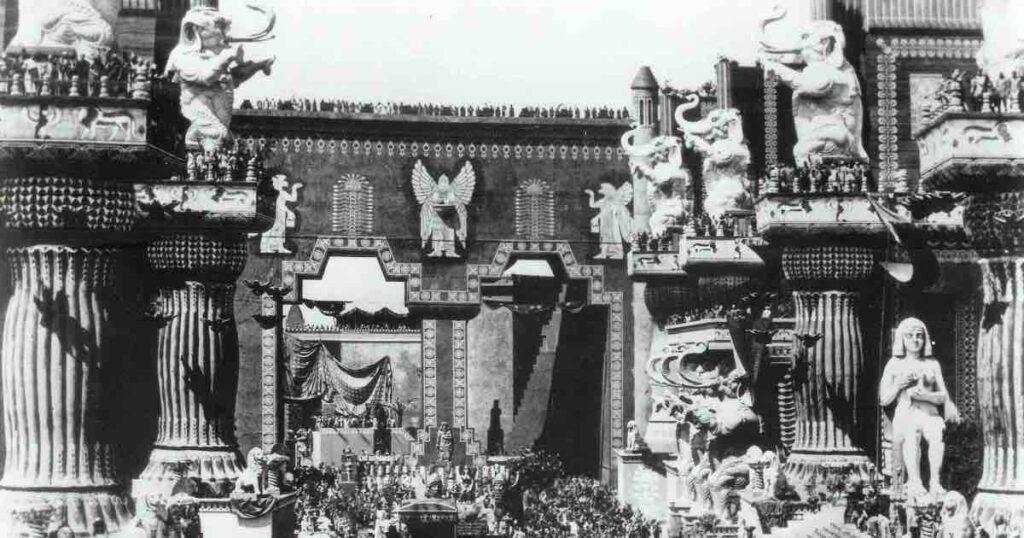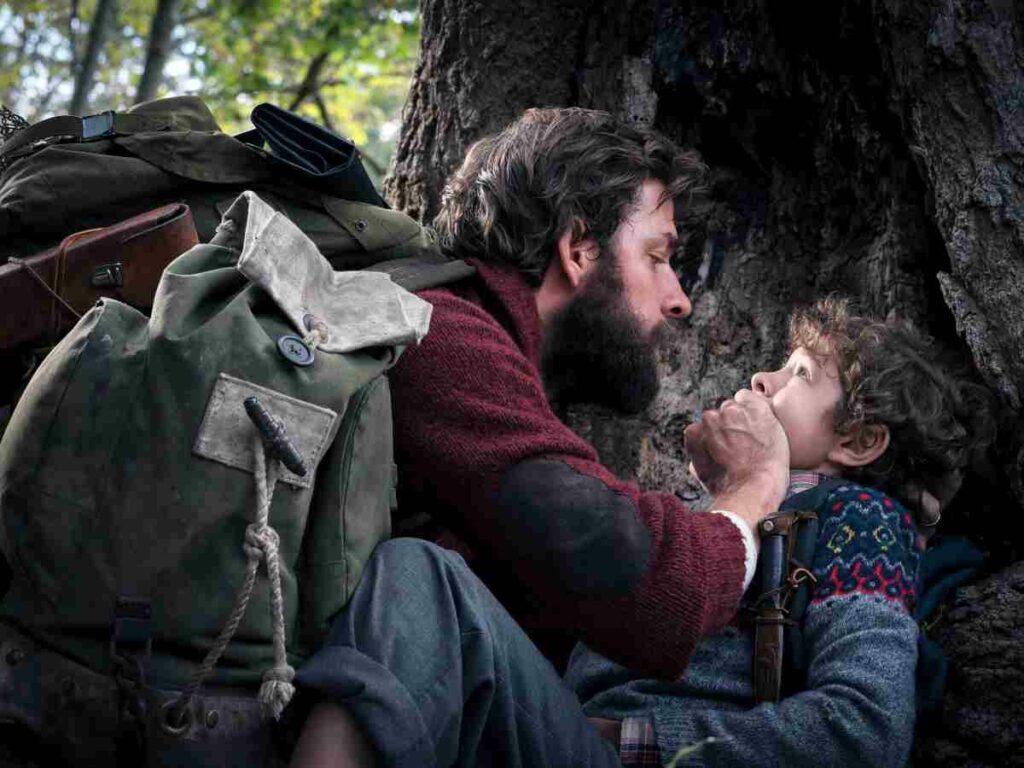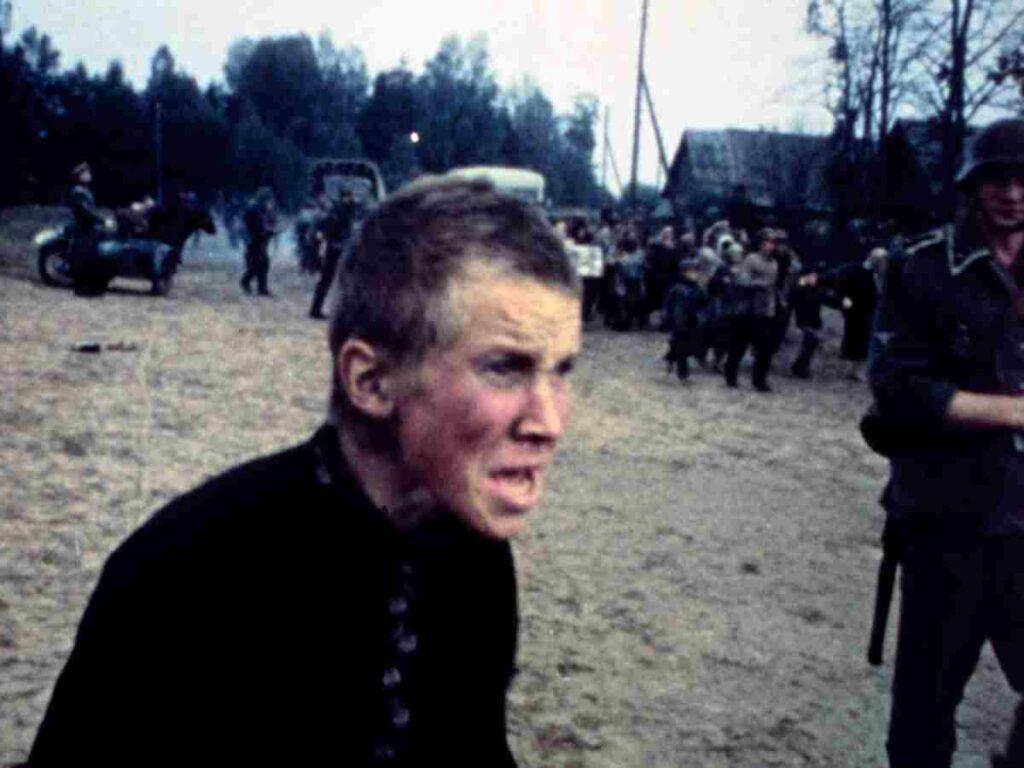Cinema is uniquely the predominant modern art form. Narrative cinema in particular originated in the 1890s with Alice Guy-Blaché and Georges Méliès making the early short fictional works. Narratives determined the style of a film. Later, it led to the creation of different film genres, and by the 1910s cinema became a major industry. The technical experiments in imagery and editing kept shaping cinema and also the role of films in society. Every decade spawned new technological innovations as well as revitalized the methods of storytelling.
The aim of this list is to pick one outstanding film that, in some way, defined that particular decade. From the austere, early silent Swedish cinema to James Cameron’s 3-D spectacle, the cinematic medium’s journey is awe-inspiring. I know that it’s a tall order to zero-in on one best movie from every decade. Nevertheless, this is an earnest attempt to celebrate 100-plus years of cinema.
1. 1910s – Intolerance (1916)

Cinema in the 1910s was gradually making the audience realize its power and complex techniques. The legendary American filmmaker David Wark Griffith’s The Birth of a Nation (1915) became a landmark narrative cinema. Despite being disturbingly racist, it established the building blocks of film grammar. The 1910s was also the era when filmmakers understood the possibilities of cutting and the beauty of cameras on wheels. The 1913 Italian silent epic Cabiria used camera dolly with such grace that it was later termed as ‘Cabiria movements’.
In Intolerance, the epic follow-up to Birth of a Nation, Griffith went on to stretch the limits of the then existing cinematic techniques. The 3-hour epic intercuts between four different historical times, i.e., four plot-lines to showcase the human trait of intolerance. The cross-cutting focused on something more than story or action. Griffith’s innovation provided deeper meaning in the form of theme. Consequently, this had a huge impact on filmmakers all over the world, particularly the Soviets. Sergei Eisenstein studied the film in detail, the man who later pioneered the Soviet montage theory.
As mentioned above, the other greatest achievements of Intolerance are the camera movements. The film’s much talked about Babylon sequence was shot from hot-air balloons. Besides, Intolerance gave a lot to cinema in terms of composition, set-design, and costuming. Sadly, the film was recognized as an artistic landmark only in the later years. At the time of its release, Griffith’s storytelling confused the audience and the film was a commercial failure.
2. 1920s – The Passion of Joan of Arc (1928)

In the 1920s, cinema was well established as an industry. Great studios evolved and brought along unprecedented changes to the way movies were made. Film movements gained traction across Europe. French impressionism, German expressionism, Soviet montage cinema plus the surrealist cinema expanded the artistic capabilities of the medium. Elsewhere, in America the three masterful comedians – Chaplin, Keaton, and Lloyd developed the art of silent comedy. It was also the time of monumental epics like Thief of Bagdad & Fritz Lang’s Metropolis.
But one film that stands out for me in this decade is the visually minimalist yet a highly spiritual feature. Dreyer’s The Passion of Joan of Arc tells the popular tale of a 15th century uneducated French peasant girl. She is hailed as a saviour of her country, but later tried for witchcraft, and burnt at the stake. Maria Falconetti who had never acted in a film (and never acted after this) played the titular character. Dreyer captures her suffering at the trial through extreme close-ups which lends the proceedings an undeniable power.
Though the mise-en-scène is sparse, Dreyer synthesized various simple techniques of filmmaking to create an intense movie experience. Movies up to that point had rarely examined emotions – fear, pain, and resilience – with such grace and intimacy.
3. 1930s – Modern Times (1936)

Charlie Chaplin’s on-screen character Tramp was a loveable ‘everyman’ who lives in the fringes of society. In The Kid (1921), Gold Rush (1925), and City Lights (1931), he established his vision against authority, and captured the socioeconomic turmoil of the era. By 1936, Chaplin had complete control over his projects. Yet he was reluctant to make talking pictures, thinking it would make his Tramp character obsolete. Modern Times was Chaplin’s final attempt to reassert the Tramp’s relevance in the modernist, machine-age.
The film is a critical and comical commentary on the struggles of the working class. It also tackles the crises faced by the human condition in the age of rapid industrialization. Who can forget the scene where Chaplin’s factory worker was force-fed by the machine? The machine starts gracefully but gradually turns violent, robbing the individual of the dignity of feeding himself. It comes across as a foreboding for humans’ harmful machine dependencies which resonates across time and age.
Chaplin’s Modern Times is a thoughtful critique on the anxieties of modernization dealt with pathos and humour. It shows how machines that are invented for the betterment of humankind place system efficiency above humanity. It’s a critique that only the intellectuals of the era theorized in the tomes.
4. 1940s – Citizen Kane (1941)

Orsen Welles’ Citizen Kane has long carried the reputation of ‘greatest film ever made’. And naturally anything that comes with such superlative praise is seen with suspicion. Yet it would be an understatement to say that Orson Welles’ film brought an explosive array of modernist techniques to cinema. It wasn’t the first film to employ deep focus or innovative lighting or such marvellous editing style. But the way Welles amalgamated these techniques to narrate the story of the eponymous baron influenced a generation of filmmakers.
He didn’t just borrow the established techniques, but utilized it to unlock some of the singular storytelling methods. The chiaroscuro lighting, the deep focus in the childhood flashback scene, the 2-minute montage — Citizen Kane has plenty of memorable sequences. One could say Welles borrowed techniques in order to invent a new visual grammar. In fact, Welles himself has often said that his inexperience was the primary reason behind his inventive approach. In other words, he didn’t know that he was cooking up fresh visual vocabulary.
Citizen Kane places importance on form more than content. And, of course for new generation viewers the techniques might seem outdated or too flashy. Yet if you patiently sit through it, you can comprehend the brilliant synergy of a filmmaker’s talent, ambition and vision.
5. 1950s – Tokyo Story (1953)

In Sight & Sound Poll of Directors’ 100 greatest films of all time, Ozu’s Tokyo Story garnered the most votes. One of the finest Japanese films, it’s undoubtedly, a mainstay of several ‘best film’ lists, but it was a tough decision for me to choose this as the decade’s best. The two other 50s films that have left a great impact on me are: Seven Samurai and Apu Trilogy. However, more than anything it’s important to acknowledge Ozu’s distinct aesthetic. His film form and spatially original narrative space bestows an unparalleled transcendental experience to the viewers.
Prolific documentarian Mark Cousins notes:
Ozu did not marry, had no experience of factory life, did not attend university and yet for more than thirty years made films about the calm everyday lives of married people, factory workers, and students.
To elaborate on this, Ozu films are not just traditional dramas about middle-class families. He meticulously explored the simmering tensions and anxieties affixed within the routine domestic life. Ozu’s pared down aesthetics and plot mostly revolves around elderly parents and their grown-up children.
In Tokyo Story, an elderly couple visit their self-centered children living in Tokyo. Ozu interestingly isn’t trying to elicit emotions from the scenario. He rather observes the ebbs and flows of life as everyone tries to cope and catch up to the demands of modern life. In fact, no other filmmaker in the history of cinema has so perfectly captured the sense of life passing by.
WATCH: 10 Greatest Yasujiro Ozu Films, Ranked
6. 1960s – The Battle of Algiers (1966)

The 1960s were the most innovative decade in international cinema. The vibrant French New Wave which emerged in the late 1950s became the most influential film movement. Czech New Wave was equally fascinating and radical. It lasted until the Soviet tanks marched into Czechoslovakia in 1968. The rise of the New Left in Japan led to the phenomenal Japanese New Wave. Filmmakers like Imamura, Oshima, Teshigahara captured social turmoil in post-war Japan. American cinema was also radically transformed in the 1960s. Stanley Kubrick made the greatest sci-fi of all time, 2001: A Space Odyssey (1968).
WATCH: 2001: A Space Odyssey EXPLAINED
Yet if there’s one film whose ideas resonate across time, and subsequently changed the equation of cinema, it is Gillo Pontecorvo’s Battle of Algiers. The film is a dramatic re-enactment of the Algerian liberation struggle. Soon after its release, it became a touchstone of Third Cinema. This film movement that originated in Latin America closely explored the violent after-effects of colonialism and imperialism. Made on shoe-string budgets and non-professional actors, Third Cinema recognized the common struggles of the oppressed people.
From the Irish conflict to the Palestine struggle and Sri Lankan civil war, Battle of Algiers’ representation of both sides of the struggles continues to have contemporary relevance. It’s truly revolutionary cinema and a perfect antithesis to the dominant propaganda of the Hollywood machine.
7. 1970s – The Godfather (1972)

The greatest epics in cinema often come into existence in an unanticipated manner. That’s the case with Francis Ford Coppola’s The Godfather. Mario Puzo’s novel, on which it is based, was a best-seller. But critics largely dismissed it as pulp fiction. The now famous cast of Al Pacino, Diane Keaton, and James Caan were then relatively unknown. Moreover, the studio didn’t want Marlon Brando to play Vito Corleone. Yet despite a lot of obstacles, Coppola created magic and brought to the spotlight the ‘New Hollywood cinema’ of the 1970s.
Coppola’s The Godfather is more than a fictional take on a criminal syndicate. It explores the nexus between the mafia, law enforcement, and political establishment. The phrase ‘American Dream’ is a popular belief of the nation. In The Godfather, Coppola looks at the moral decay at the centre of the alleged ‘American Dream’. Besides, it’s an aesthetically ingenious picture. The warm colour palette and painterly frames immerse us into this world of power and deceit. In fact, the warm colours gradually turn darker as the narrative proceeds.
The Godfather’s impact can be heavily felt in many films made after it. It’s probably one of the most widely imitated films in the history of cinema.
8. 1980s – Blue Velvet (1986)

Surrealism is one of the important art movements that had its influence in cinema from the early 20th century. Bunuel’s Un Chien Andalou (1929) and Cocteau’s The Blood of a Poet (1931) were some of the pioneering examples of surrealist cinema. These and the later era films were aimed at shaking up the established notions of narrative in cinema. David Lynch’s surrealist worlds are interesting because his films aren’t simply focusing on dreams and the unconscious. He rather looks at the mystery, horror, and uncertainty that remains hidden within our material world.
Blue Velvet, Twin Peaks series, and Mulholland Dr. are best examples of Lynch’s portrayal of dream-like qualities within a ’normal’ world. In Blue Velvet, Lynch deconstructs the frightening and revolting things existing inside a calm suburban community. Despite the simplicity of his plot, Lynch’s narrative often speaks to the subconscious that it evokes many interpretations. In fact, the most common interpretation of Blue Velvet is that it’s about the moral decay beneath the glittering facade of America. But there’s more psychological complexity to this terrifying mystery drama.
David Lynch also rediscovered himself through Blue Velvet after the notorious failure of Dune (1984). The 1980s offered many blockbusters including E.T. (1982) and Aliens (1986). Yet nothing comes close to the dizzying cinematic universe of Lynch.
9. 1990s – A Brighter Summer Day (1991)

In the 1990s, Hollywood’s status as the ‘centre of entertainment’ greatly strengthened. Spielberg’s Jurassic Park brought reinvigorated spectacle cinema. Later in the decade, James Cameron’s Titanic broke new records at the international box office. And let’s not forget the influence Wachowskis’ Matrix had on pop-culture. American cinema also made some of the greatest works in this decade. From Schindler’s List, Pulp Fiction to Magnolia, and Fight Club, there were numerous smart, groundbreaking movies.
The 1990s also saw a tremendous rise in international cinema. The Iranian New Wave continued to reap a lot of accolades. Kieslowski made Three Colors Trilogy before passing away in 1996. And Bela Tarr made his magnum opus Satantango (1994). Yet one film that stands out for me in this decade is Edward Yang’s A Brighter Summer Day. It’s an intimate, 4-hour long coming-of-age tale of a young boy growing up in the turbulent environment of 1960s Taipei. It’s slow-moving and explores a great number of characters within a specific culture and time.
In fact, Yang’s film feels more like a great piece of classic literature. It’s very dense, lacks flashy visual tricks, and allows the story to flow organically and gracefully. Every character arc feels like the viewer has experienced it closely. Edward Yang was part of the Taiwanese New Wave triumvirate which also includes Hou Hsiao-hsien and Tsai Ming Liang.
10. 2000s – The Lord of the Rings Trilogy

Peter Jackson’s long-awaited live-action adaptation of Tolkien’s epic fantasy series was one of the most monumental works of cinema. Having grown up reading Tolkien, it was fascinating to discover how closely Jackson’s adaptation adheres to the source material. But more than that, the fantastic creation of Tolkien’s vision of Middle-Earth far exceeds a reader’s imagination. The trilogy was a big commercial and critical success. It collectively earned 17 Academy Awards. Furthermore, the LOTR trilogy paved the way for more fantasy stories, setting off a renaissance of sorts in Hollywood.
The trilogy was largely shot in New Zealand, which is also home to WETA Digital, the special effects firm. Peter Jackson is one of the founders of WETA. It is known for revolutionizing VFX production. ‘Massive’ is a software created specifically for LOTR to simulate large-scale battles in a realistic manner. Nearly two decades later, the piece of software is still creating iconic battle scenes, including the ones in HBO’s Game of Thrones.
We can write reams on LOTR’s scale of production. But eventually the reason for the movie’s greater impact on us is the deep emotional investment. There might be things in LOTR that wouldn’t age well. However, Jackson so perfectly visualizes Tolkien’s emotional beats that it remains one of the most soulful movie experiences ever.
11. 2010s – Once Upon a Time in Anatolia (2011)

One of Turkey’s finest films, Once Upon a Time in Anatolia is a a profound study of human condition. Nuri Bilge Ceylan is one of the most influential filmmakers working today. His poetic, intimately observational dramas are inspired by the works of Russian literary masters. Ceylan made three of his best works in this decade, including Once Upon a Time in Anatolia. The film opens like a police procedural as a group of law enforcement authorities go in search of a body. Set among the haunting Turkish steppes, the narrative gradually becomes a treatise on the human condition. Though full of melancholic ruminations, the film intermittently surprises us with its flashes of dark humour.
Tarkovsky and Ozu clearly have an influence on Ceylan’s stunning aesthetics. His continuing collaboration with cinematographer Gökhan Tiryaki brings out an extraordinarily composed visual world. Ceylan’s lengthy takes and meticulously framed set-ups might withhold the traits of slow cinema. At the same time his dense philosophical musings lend his works a distinct edge and defied categorizations. Ceylan along with Koreeda and Lee Chang-dong have made this an outstanding decade for world cinema.
Conclusion
These are some of the most important works that capture the transformation and diversity in cinema in each decade. They may or may not be the ‘greatest films ever made’ but are significant milestones in the world of film. From its humble beginnings of the silent era, cinema as a medium has continued to grow, opening up opportunities like never before and become an affordable tool in the hands of storytellers. It would be interesting then to watch its multi-faceted growth in the coming decades.




